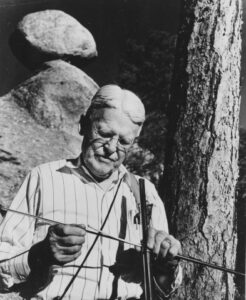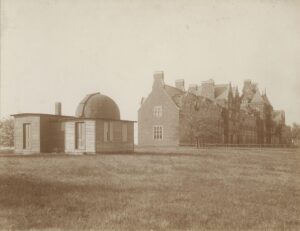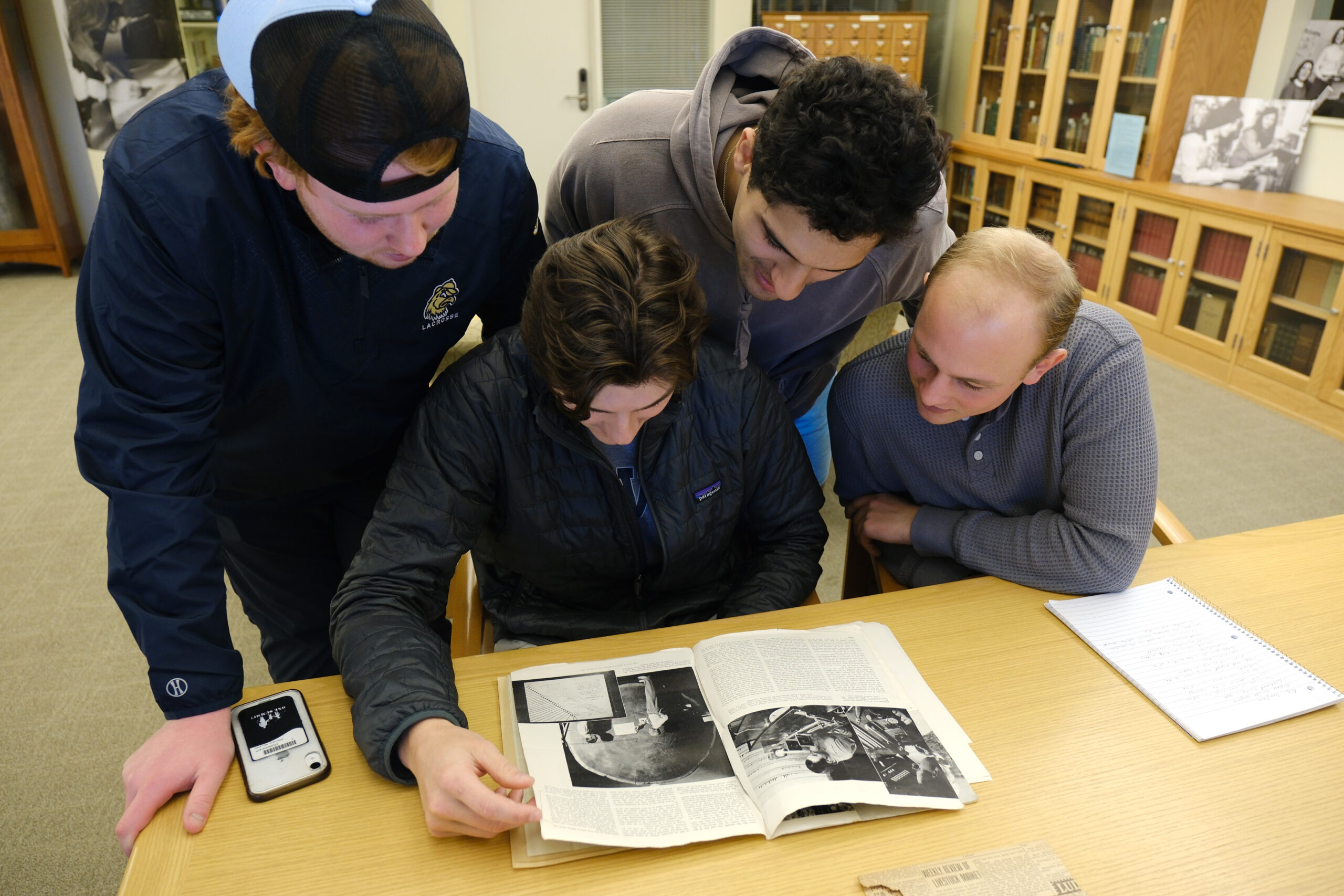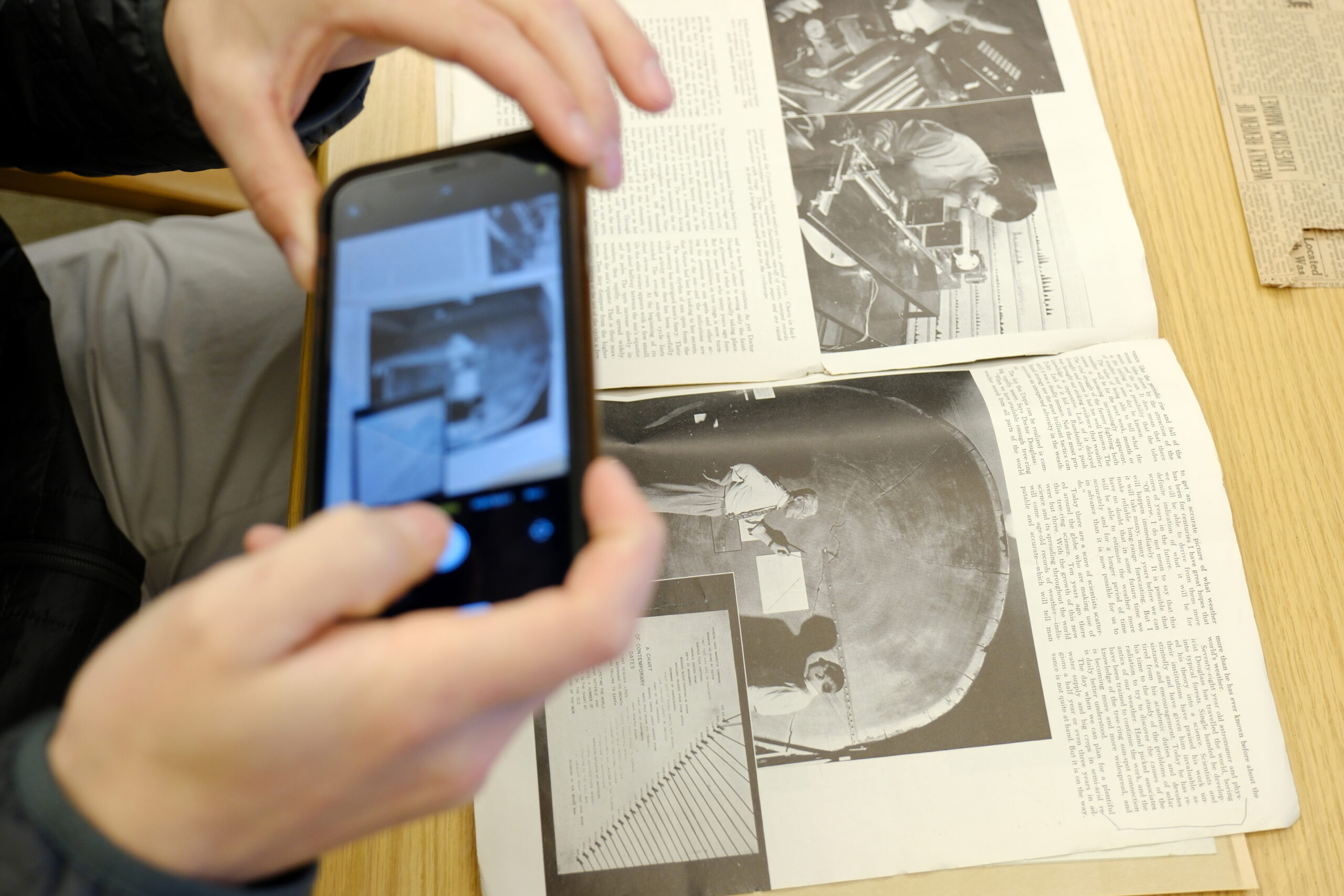Throughout the past two years, Clark Alejandrino’s students researched a notable Trinity College alumnus to understand climate change throughout history. Their investigation into Andrew E. Douglass, Class of 1887, led to the following paper shared by Alejandrino, assistant professor of history.
Students on the project include: Lucy Bailey ’26, CC Cohen ’25, Edward Cohen ’27, Zach DelGaizo ’25, Charles Dewey ’25, Sophia Fischer ’26, Hannah Flis ’27, Peter Gilbert ’25, Morgan Glovsky ’27, Kaia Henderson ’27, Ruokun Liu ’25, Thea Nguyen ’26, Anastasia Prentiss ’26, Luca Steinert ’26, Saisha Uttamchandani ’26. Last year’s students who performed the groundwork: Matt Almansi ’24, Andrew Bailey ’24, Peter Cannon ’24, Emma Cropper ’23, Seamus Johnston ’24, John Jiawei Li ’24, David Liang ’25, Rob Mihaly ’23, Will Nelson III ’24, Solandis Pak ’24, Matt Pecora ’24, Connor Quiet ’25, Michael Regan ’24, Billion Shen ’24, John Strenski ’23, Devan Vane ’24, Suchang Wu ’23, Nick Zalanskas ’24, Zoe Zarifes ’24, Tommy Zovich Jr. ’25. Supported in their research by Watkinson Library staff, the students wrote the following summary:

As Trinity students, when asked about our noteworthy alumni, one might turn to arguably our most impressive alumni–Andrew E. Douglass (1867-1962), the father of dendrochronology.
Dendrochronology, or tree ring dating, is a proxy-dating method that can provide a glimpse into past climates. Analyzing them can reveal much about the solar radiation levels and precipitation received during a particular period. Years with warmer and wetter climates have wider rings. Colder and drier years, however, have narrower rings. This method is also minimally disruptive to the trees themselves, with core samples being thinner than pencils.
For the natural sciences, studying tree rings can be a window to past climates. Utilizing this proxy-dating method, scientists have been able to piece together large chunks of climate data, with chronologies of 8,600 years for the bristlecone pine of California and 12,500 years for the Hohenheim oak in Germany (Mason). But to fully comprehend the weight of Douglass’ legacy, the value of understanding climate change must be realized. Through the collection of proxy data, scientists have been able to piece together a comprehensive understanding of past climates. This serves an important purpose: to help us understand how the climate has changed throughout history. By comparing changes in climate over time, we can conclude that the modern changes in climate are not only completely unprecedented but also correlate with human activity.

The path to Douglass’ discovery of this field was not straightforward. Douglass decided to follow in his father’s footsteps and attend Trinity College, graduating as a part of the class of 1889. Here, he studied astronomy, physics, and mathematics, and was a member of the fraternity Psi Upsilon. During his junior year, he took an interest in studying stellar photography– images that featured astronomical objects such as stars, galaxies, and planets. It was this academic brilliance and innate curiosity that guided his post-graduate life. After graduating from Trinity, he went on to work at the Harvard College Observatory until 1894. Then, he moved to the now Lowell Observatory in Flagstaff, Arizona where he worked as the first assistant astronomer until 1901.
As they say, curiosity kills the cat—a statement that Douglass learned the hard way at the observatory. Douglass studied under Percival Lowell, who attempted to connect the presence of ‘canals’ to the work of Martians. Being as inquisitive as he was, Douglass poked holes in Lowell’s far-fetched Martian theory. Tensions festered and grew over their disagreement, which eventually got him fired. Thankfully, his dismissal hardly affected his ambition. In the subsequent year, Douglass was elected probate judge of Coconino County twice, holding the position for four years. However, despite this career change, Douglass’ scientific pursuits did not waver, as he directed the completion and mounting of the first ever 36-inch telescope mirror made in the United States during this time, demonstrating his constant pursuit of scientific discovery and achievement.
He would return to education shortly, as he went on to become a physics professor at the University of Arizona, where he would hold a range of titles, including the president of the university. His list of achievements is as lengthy as they are impressive: in the 1920s he filmed and photographed astrological events, took part in a scientific expedition, and made a device that could photograph shadow bands, which he put to use during a solar eclipse in 1925.
Despite all these accomplishments, none hold a candle to his discovery of dendrochronology. He never stopped pursuing his true scientific curiosity: solar variability and its potential effects on Earth’s climate. He believed that fluctuations in the number of sunspots at a given period impacted Earth’s weather. This interest in solar cycles eventually led him to hypothesize that a tree’s ring width in a given year could indicate rainfall and solar activity. Starting with ponderosa pine samples, he developed a tree-ring chronology of Northern Arizona. By 1911, he had put two and two together: trees from different regions–even at great distances–had identical ring patterns when subjected to similar climatic parameters. In the next three years, he’d accomplished a comprehensive 500-year chronology of the Flagstaff region, spearheading the applications of his discovery. When he returned to Trinity in 1908, the college awarded him an honorary Doctor of Science degree. Far from being remembered merely as a technical innovator, Douglass exemplifies the highest ideals of scholarship and scientific inquiry, reminding us of the importance of curiosity and resilience in the pursuit of knowledge.




